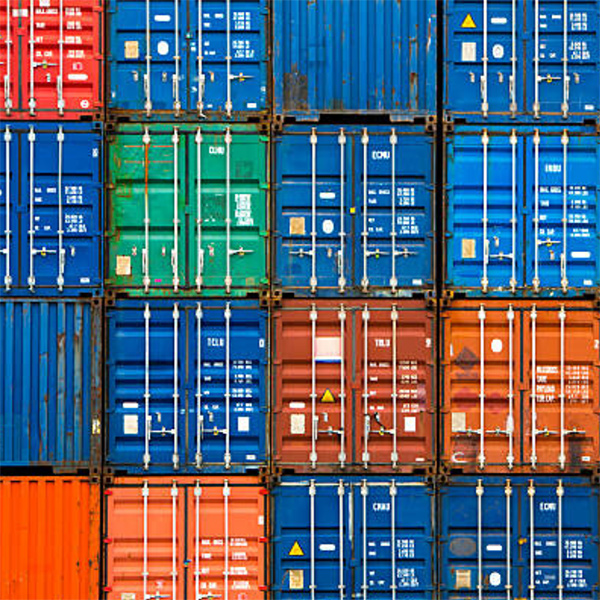Organic cotton is grown using methods and materials that have a low impact on the environment. Organic production systems replenish and maintain soil fertility, expand biologically diverse agriculture, and prohibit the use of synthetic toxic and persistent pesticides and fertilizers, as well as genetically engineered seed. Third-party certification organizations verify that organic producers meet strict federal regulations addressing methods and materials allowed in organic production.
Much of the demand for organic cotton currently comes from manufacturers and brands with corporate environmental and social responsibility goals driving them to seek to be responsible stewards. So, too, they are acting in response to consumers increasingly seeking sustainable, chemical-free fiber and finished apparel and home products.
How much organic cotton is grown globally?
The 2019/20 harvest year saw 229,280 farmers grow 1,144,350 bales (249,153 tons) of organic cotton fiber on 1,454,030 acres (588,425 hectares) of certified organic land in 21 countries. This represented a 31% increase over the previous (2018/2019) year and was the second-largest organic cotton harvest on record.
Additionally, 124,917 acres (50,552 hectares) of cotton-growing land were in conversion to organic in 2019/20, which will bring organic closer to meeting the growing global demand. Organic cotton currently makes up approximately 0.95% of global cotton.
Organic cotton was grown in the following 21 countries (in order of ranking): India (49.8%), China (12.3%), Kyrgyzstan (11.8%), Turkey (9.7%), Tanzania (4.5%), Tajikistan (4.2%), U.S. (2.8%), Uganda (1.9%), Pakistan (0.8%), Greece (0.7%), Benin (0.6%), Peru (0.3%), Burkina Faso (0.2%), Egypt (0.1%), Uzbekistan (0.1%), Ethiopia (0.1%), Brazil (0.1%), Mali (0.03%), Myanmar (0.01%), Thailand (0.002%), and Senegal (0.001%).[1]
Who are the leading players in the global organic cotton marketplace?
The top 10 companies (using a holistic consideration of both management and uptake) using organic cotton in 2019 were (in descending order based on a company’s management practices, including risk assessment, transparency, investment, target setting, impact measurement, and adoption rate of “preferred cotton”): H&M, C&A, Inditex, Aldi Group, Tchibo, Nike, AB Lindex, Varner, Bestseller, and Stanley & Stella.
The top 10 organic/Fair Trade companies meeting the same criteria were: Boll & Branch, Naturaline, Dibella, Cotonea, Dedicated Sweden, ARMEDANGELS, Knowledge Cotton Apparel, Coyuchi, Veja, and Continental Cloth.[2]
How much organic cotton is grown in the United States?
In 2019, U.S. organic cotton production amounted to 23,720 bales (5,164 MT) harvested from almost 29,000 acres (11,728 HA), despite challenging weather conditions including both drought and hail. The U.S. represents 2.8% of global organic cotton production and 0.2%[3] of U.S. cotton[4]). There were 83 farmers involved in U.S. organic cotton production in Texas and New Mexico.
Two entities – the Texas Organic Cotton Marketing Cooperative (TOCMC) and the ProCot Cooperative program managed by Allenberg Cotton Company – dominate U.S. organic cotton production, growing 74% of the total fiber in 2019. Most organic cottonseed is sold to organic dairies for use as feed, though many farmers catch and reuse their seed.[5]
What is the U.S. organic cotton market value?
Organic fiber continues to be the largest and fastest-growing non-food category (which includes organic textiles, household products, personal care products, supplements, pet food and flowers) of the U.S. organic industry, representing 40% of the category’s total sales as of 2021. According to the Organic Trade Association’s recently-released 2022 Organic Industry Survey, organic fiber product sales increased 10% over the prior year, reaching $2.3 billion in 2021, with most sales coming from organic cotton. Overall, sales of organic food and non-food products in the U.S. totaled $63 billion in 2021 – a roughly 2% increase from the previous year’s explosive, pandemic-driven growth levels.[6] Increasing consumer awareness of the availability of organic apparel and home textiles (e.g., mattresses, sheets, and towels) is driving growth in the organic textiles and fiber market.
What about the processing of organic cotton into finished textiles?
Companies are increasingly becoming certified to traceability standards such as the Textile Exchange Organic Content Standard (OCS), which verifies that the cotton in a final product is certified organic. In 2021, there were 11,885 facilities globally certified to the Organic Content Standard, a 37% increase over 2020.
Thousands of facilities around the world also have become certified to the Global Organic Textile Standard (GOTS).[7] GOTS is a stringent voluntary global standard for the entire post-harvest processing (e.g., spinning, knitting, weaving, dyeing, and manufacturing) of apparel and home textiles made with organic fiber. The standard prohibits the use of toxic inputs during the processing stages and establishes strong labor provisions including a prohibition on child labor.
In 2021, the number of GOTS-certified facilities grew 19% to 12,338 globally. In addition, the number of approved chemical inputs increased 13% to 26,913.[8]
In 2011, the U.S. Department of Agriculture issued a policy memorandum addressing the labeling of textile products containing certified organic fibers, including cotton, linen, and wool. According to the memo, products containing organically grown fibers that have been processed according to GOTS may be marketed as organic in the U.S.[9]
What kinds of products are made using organic cotton?
As a result of consumer interest, organic cotton fiber is used in everything from personal care items (e.g., sanitary products, make-up removal pads, cotton puffs, ear swabs), to fabrics, home furnishings (e.g., towels, bathrobes, sheets, blankets, bedding, mattresses), children's products, and apparel of all kinds and styles.
In addition, approximately two-thirds of cottonseed is used for animal feed, and cottonseed oil is used in a variety of food products, including cookies and chips.[10]
© June 2022. Organic Trade Association. Developed with support from Naturepedic Organic Mattresses.
RESOURCES
Cotton and the Environment Organic Cotton Fact Sheet Textile Exchange Quick Guide to Organic Cotton
[1] Textile Exchange. Organic Cotton Market Report 2021. 2021. https://textileexchange.org/wp-content/uploads/2021/06/Textile-Exchange_Organic-Cotton-Market-Report_2021.pdf.
[2] Textile Exchange. Material Change Insights Report: 2019. May 27, 2020. https://store.textileexchange.org/product/2019-material-change-insights-report/
[3] Textile Exchange. Organic Cotton Market Report. 2021. https://textileexchange.org/wp-content/uploads/2021/07/Textile-Exchange_Organic-Cotton-Market-Report_2021.pdf
[4] U.S. Department of Agriculture. Crop Production. May 2020. https://www.nass.usda.gov/Publications/Todays_Reports/reports/crop0520.pdf
[5] Textile Exchange. Organic Cotton Market Report. 2021. https://textileexchange.org/wp-content/uploads/2021/07/Textile-Exchange_Organic-Cotton-Market-Report_2021.pdf
[6] Organic Trade Association. “2022 Organic Industry Survey Shows Steady Growth, Stabilizing Purchasing Patterns.” June 2, 2022. https://ota.com/news/press-releases/22284
[7] Global Organic Textile Standard GmbH. Global Organic Textile Standard Version 6.0. 2020. https://global-standard.org/images/resource-library/documents/standard-and-manual/gots_version_6_0_en1.pdf
[8] Global Organic Textile Standard GmbH. “GOTS Marks 20th Anniversary with All-Time High in Certified Facilities.” February 23, 2022. https://global-standard.org/news/gots-press-release-gots-marks-20 and GOTS personal communication. June 27, 2022.
[9] US Department of Agriculture. “Labeling of Textiles That Contain Organic Ingredients.” May 20, 2011. https://www.ams.usda.gov/sites/default/files/media/OrganicTextilePolicyMemo.pdf and Organic Trade Association. May 2012. What are organic fiber products and how can you label them? https://ota.com/sites/default/files/indexed_files/What_are_Organic_Fiber_Products.pdf
[10] National Cotton Council. ND. The Many Faces of Cotton. https://www.cotton.org/pubs/cottoncounts/upload/The-Many-Faces-of-Cotton.pdf











